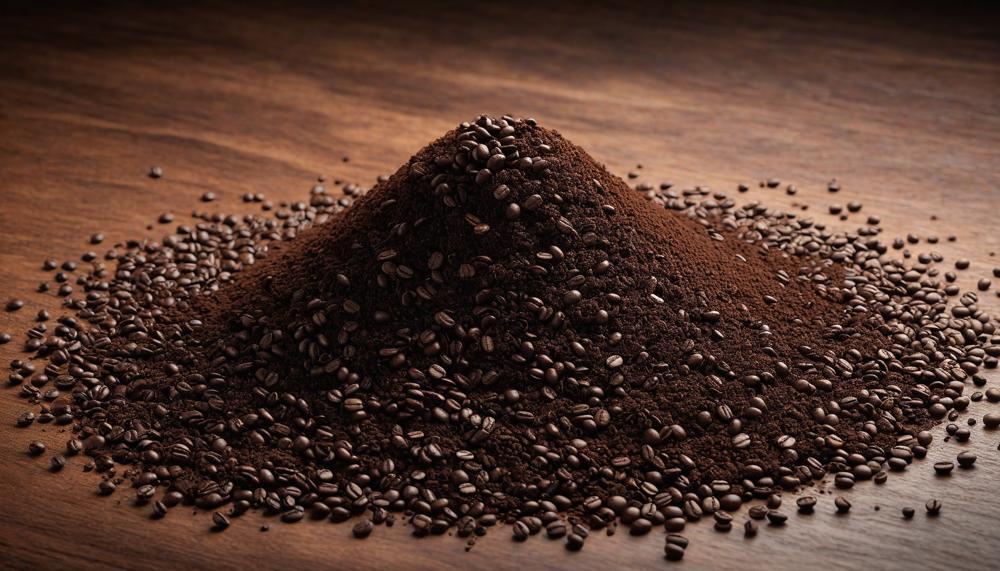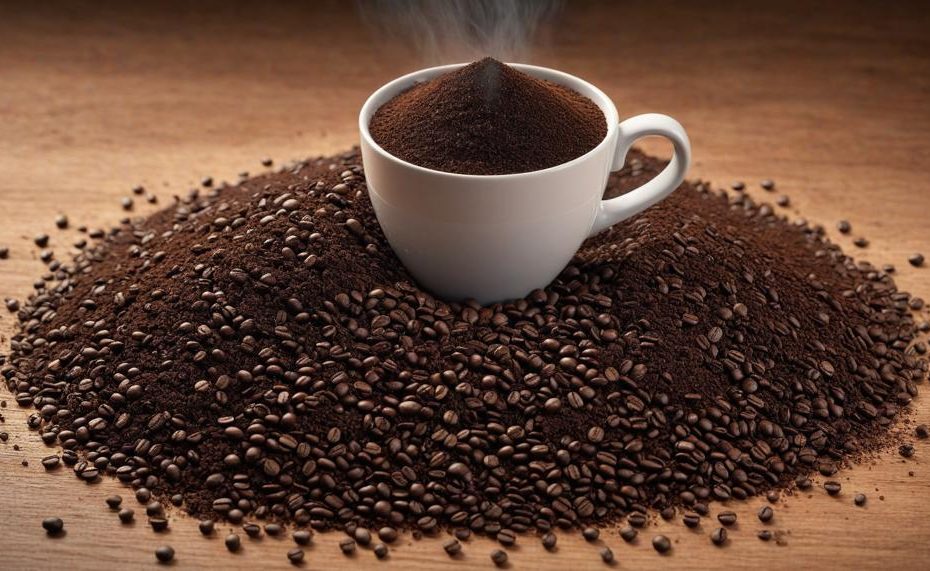Every morning, millions of us kickstart our day with a cup of coffee, but what happens to the grounds once we’re done brewing? Disposing of coffee grounds isn’t just a mundane task—it’s an opportunity to make a positive impact on the environment.
Whether you’re a seasoned barista or a casual coffee lover, knowing how to handle those used grounds can keep your home running smoothly and benefit the planet.
Key takeaways:
- Composting: Transform coffee grounds into nutrient-rich compost for gardens and landscaping.
- Avoid Drains: Never dispose of coffee grounds down sinks or toilets to prevent clogs and environmental harm.
- Direct Use in Gardens: Use grounds as a natural fertilizer or pest repellent in your garden.
- Creative Reuse: Incorporate used grounds into cleaning products or crafts.
- Community Contribution: Donate to local gardens or partner with community composting programs.
- Check Local Resources: Utilize waste management services and guidelines provided by local governments.
By integrating these sustainable practices, you can turn your daily coffee ritual into a greener, more eco-conscious routine.
Contents
Benefits of Reusing Coffee Grounds
Reusing coffee grounds can benefit both the environment and your household in several practical and sustainable ways.
Environmental Benefits:
- Reduces Waste: Reusing coffee grounds diverts waste from landfills, reducing the overall amount of garbage and methane emissions.
- Enhances Soil Quality: Coffee grounds are rich in nitrogen and other minerals, making them an excellent addition to compost, which improves soil fertility and plant growth.
- Natural Pest Repellent: Coffee grounds can deter pests like slugs and snails when sprinkled around garden plants.
Household Benefits:
- Odor Neutralizer: Placing coffee grounds in the refrigerator or any odorous area helps absorb and neutralize unpleasant smells.
- Cleaning Agent: Their abrasive texture makes coffee grounds effective for scrubbing pots, pans, and surfaces without harsh chemicals.
- Beauty and Skincare: Coffee grounds can be used as an exfoliant in homemade scrubs, improving skin texture and circulation.
Composting Coffee Grounds
To compost coffee grounds in your garden, follow these straightforward steps:
| Step | Action | Details |
| 1 | Collect Coffee Grounds | Gather spent grounds from your coffee maker or local café. |
| 2 | Add to Compost Pile | Incorporate into your compost pile, bin, or tumbler. |
| 3 | Balance with Brown Materials | Use a ratio of 3 parts leaves to 1 part grass clippings and 1 part coffee grounds. |
| 4 | Monitor Proportions | Coffee grounds should be 20-25% of the total compost volume. |
| 5 | Maintain Moisture and Aeration | Keep the compost moist and turn it regularly. |
Disposing of Coffee Grounds in the Trash
To dispose of coffee grounds in the trash while minimising environmental harm, follow these guidelines:
- Dry the Coffee Grounds: Before tossing coffee grounds into the bin, ensure they are thoroughly dried. Wet grounds can produce unpleasant odours and attract pests. Spread them out on a tray to air dry or use paper towels to absorb moisture.
- Use Biodegradable Bags: Place the dried coffee grounds in a biodegradable bag. These bags break down more easily in landfills, reducing long-term environmental impact. Regular plastic bags can take hundreds of years to decompose.
- Seal the Bag: Seal the biodegradable bag securely to prevent the grounds from spilling out. This step is crucial in keeping your trash area clean and deterring pests.
- Avoid Mixing with Other Waste: Whenever possible, dispose of coffee grounds separately from other non-biodegradable waste. This segregation helps in easier processing and management at waste treatment facilities.
- Consider Local Regulations: Check if your local waste management system has specific guidelines for disposing of organic waste. Some areas might have dedicated organic waste bins, which can be a more environmentally friendly option.
Recycling Coffee Grounds
| Method | Description | Details |
| Cooking | Use coffee grounds in recipes | Incorporate coffee grounds into desserts like brownies or use them as a rub for meats. Their rich flavor adds a unique twist to your culinary creations. |
| Odor Elimination | Neutralize unpleasant smells | Place dried coffee grounds in a bowl or sachet in your fridge, kitchen, or car to absorb and neutralize odors. |
| Composting | Enhance your compost pile | Mix coffee grounds into your compost to boost its nitrogen content, creating nutrient-rich compost for your garden. |
| Fertilizer | Directly enrich garden soil | Sprinkle coffee grounds around plants to improve soil quality and provide a slow-release source of nutrients. |
| Homemade Soap/Scrub | Create exfoliating products | Use coffee grounds to make homemade soaps or scrubs, which help exfoliate and rejuvenate your skin. |
| Pest Repellent | Keep pests away naturally | Use coffee grounds as a barrier or spray to repel ants, snails, and other insects from your garden. |
| Hydrangea Colour Change | Alter soil pH | Change the colour of hydrangeas by using coffee grounds to acidify the soil, turning flowers blue. |
| Mushroom Cultivation | Grow mushrooms | Use coffee grounds as a substrate to cultivate mushrooms at home, providing a sustainable and edible crop. |
| Natural Abrasive | Clean dishes or pots | Utilize coffee grounds as a gentle abrasive to scrub away grime and grease from dishes and cookware. |
By incorporating these methods, you can effectively recycle coffee grounds, reducing waste and contributing to a sustainable lifestyle.
Using Coffee Grounds as Fertilizer
Coffee grounds, an abundant byproduct of our daily caffeine fix, can be repurposed effectively as a natural fertilizer for gardens and plants. Here’s a practical guide on how to use them:
Direct Application
Spread a thin layer of coffee grounds (no more than ½ inch) on the soil surface around your plants. This method provides a slow-release source of nitrogen as the grounds decompose
Covering the grounds with a light mulch, such as wood chips or straw, helps retain moisture and prevents crust formation, ensuring better nutrient availability to plants.
Incorporation into Compost
Mix coffee grounds into your compost pile where they act as a “green” material, rich in nitrogen. To balance the compost, follow a ratio of:
- 3 parts brown material (like leaves)
- 1 part green material (such as grass clippings)
- 1 part coffee grounds
This blend accelerates the breakdown process, resulting in nutrient-rich compost in 3 to 6 months. Ensure coffee grounds do not exceed 25% of the compost volume to avoid creating a compacted pile that might inhibit decomposition.
Compost Tea
Make a nutrient-rich “compost tea” by soaking used coffee grounds in water for a few days. Strain the mixture and use the liquid to water your plants, delivering a quick nutrient boost.
Soil Amendment
Mix coffee grounds directly into garden soil to improve its structure and water retention. This is particularly effective in heavy clay soils or sandy soils, where it enhances drainage and moisture-holding capacity, fostering healthier plant growth.
Mulching

Coffee grounds can be used as part of a mulch mix. Combine them with organic materials like leaf mold or bark to create a balanced mulch. This practice not only helps retain soil moisture but also gradually releases nutrients as the grounds break down.
Natural Pest Deterrent
While primarily used for fertilization, coffee grounds can also act as a deterrent for pests like slugs and snails due to their abrasive texture and caffeine content. Scatter them around susceptible plants to protect against these garden intruders.
Best Practices
- pH Neutrality: Used coffee grounds are nearly neutral in pH and won’t significantly alter soil acidity, contrary to common belief.
- Moderation: Avoid overapplication. Excessive coffee grounds can suppress plant growth and seed germination due to their potential allelopathic properties.
Conclusion
Disposing of coffee grounds thoughtfully can turn a daily habit into an environmentally friendly practice. To summarize, the best methods for disposing of coffee grounds include composting, direct use in gardens, creative reuse, and proper trash disposal.
Composting is a highly beneficial option. Coffee grounds add nitrogen to compost, enhancing soil fertility and promoting healthy plant growth. When composting, balance coffee grounds with carbon-rich materials like leaves to maintain an effective compost mix.
Avoid disposing of coffee grounds down sinks or toilets as they can cause clogs and environmental harm. Instead, use them directly in gardens as a natural fertilizer or pest repellent. The grounds’ nutrients benefit plants, and they can help deter pests like slugs and snails.
For creative reuse, coffee grounds can serve as an abrasive cleaning agent, an odor neutralizer, or an exfoliant in homemade beauty products. These applications reduce waste and offer practical household benefits.
If composting or reuse isn’t feasible, ensure proper trash disposal by drying the grounds and using biodegradable bags to minimize odor and pest issues. Sealing the bag and disposing of it separately from non-biodegradable waste can further aid in waste management.





